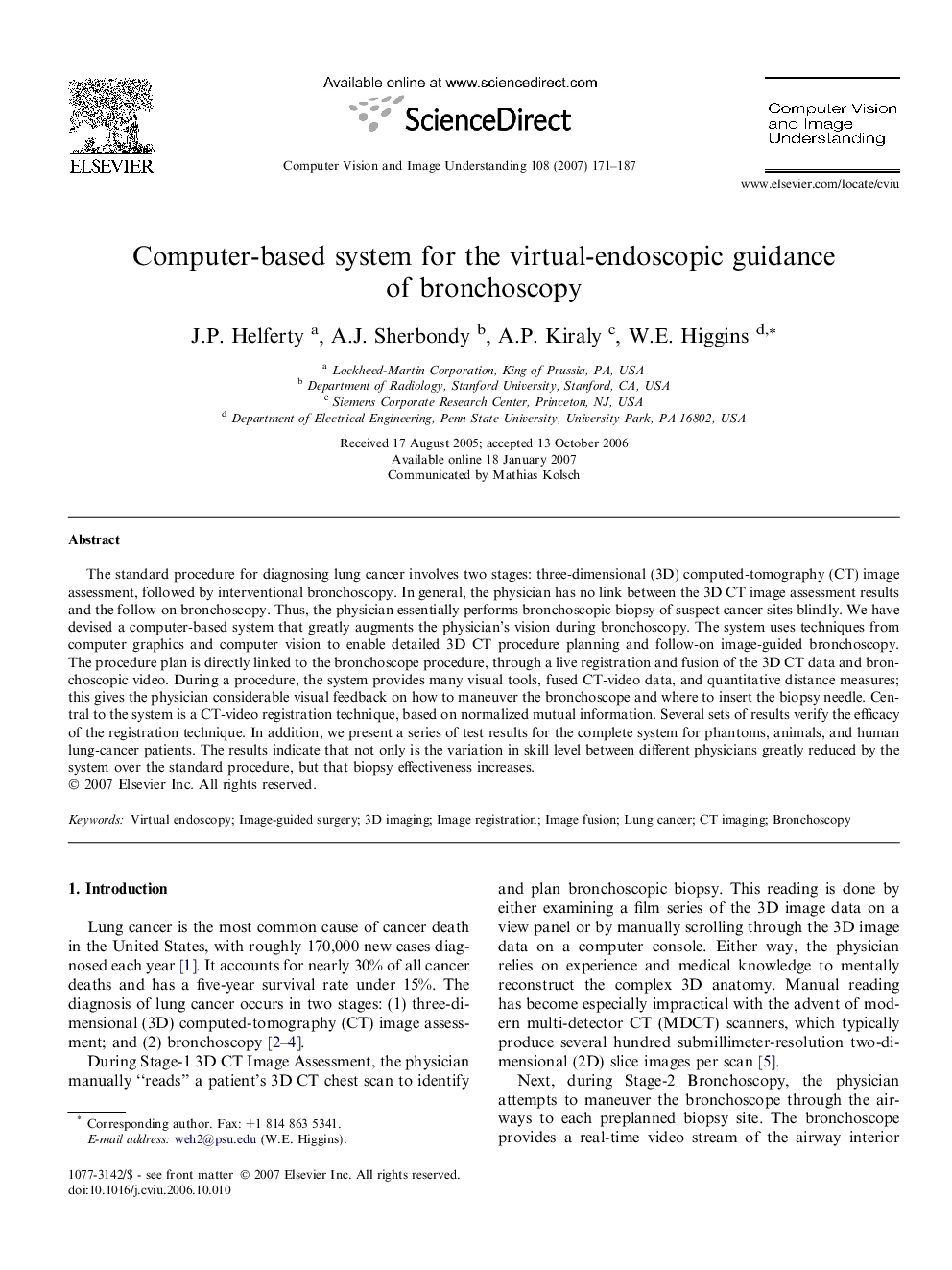| Article ID | Journal | Published Year | Pages | File Type |
|---|---|---|---|---|
| 526454 | Computer Vision and Image Understanding | 2007 | 17 Pages |
The standard procedure for diagnosing lung cancer involves two stages: three-dimensional (3D) computed-tomography (CT) image assessment, followed by interventional bronchoscopy. In general, the physician has no link between the 3D CT image assessment results and the follow-on bronchoscopy. Thus, the physician essentially performs bronchoscopic biopsy of suspect cancer sites blindly. We have devised a computer-based system that greatly augments the physician’s vision during bronchoscopy. The system uses techniques from computer graphics and computer vision to enable detailed 3D CT procedure planning and follow-on image-guided bronchoscopy. The procedure plan is directly linked to the bronchoscope procedure, through a live registration and fusion of the 3D CT data and bronchoscopic video. During a procedure, the system provides many visual tools, fused CT-video data, and quantitative distance measures; this gives the physician considerable visual feedback on how to maneuver the bronchoscope and where to insert the biopsy needle. Central to the system is a CT-video registration technique, based on normalized mutual information. Several sets of results verify the efficacy of the registration technique. In addition, we present a series of test results for the complete system for phantoms, animals, and human lung-cancer patients. The results indicate that not only is the variation in skill level between different physicians greatly reduced by the system over the standard procedure, but that biopsy effectiveness increases.
